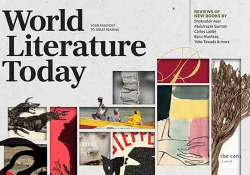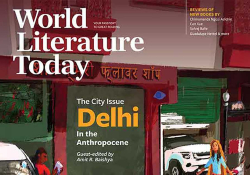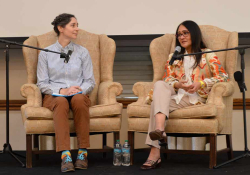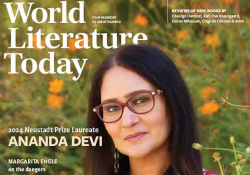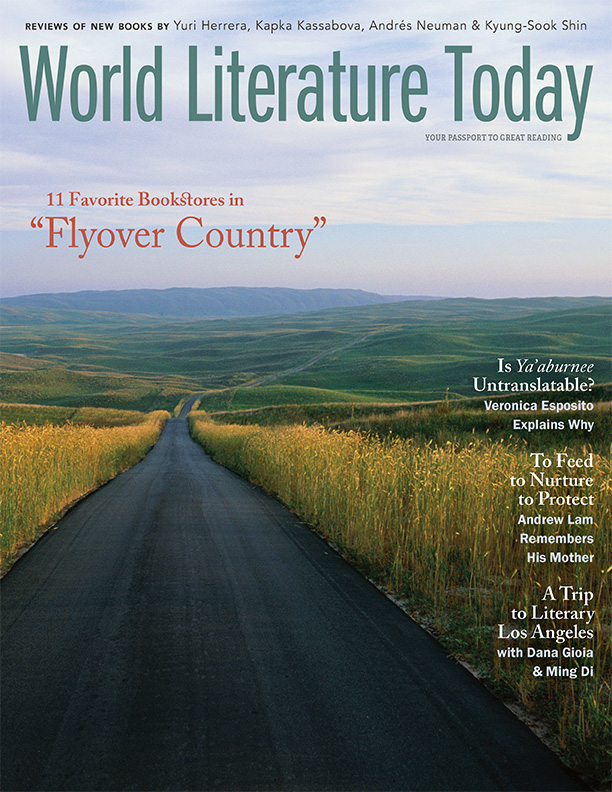Editor’s Note
 AS WORLD LITERATURE TODAY counts down to its centennial year (2026–2027), I’m continually struck by the uncanny vision of our founding editor, Roy Temple House, to launch a quarterly magazine in a region that, to some, must still seem like the hinterlands of literary geography. To be sure, modernism in literature and the arts in the mid-1920s was seen as the exclusive domain of the great European and American metropolises: Paris, London, Berlin, New York. Virginia Woolf’s Mrs. Dalloway, Marcel Proust’s Albertine disparue, Franz Kafka’s Der Prozeß (The Trial), Alain Locke’s The New Negro, and F. Scott Fitzgerald’s The Great Gatsby were all published in that annus mirabilis of 1925, which the BBC recently called “the greatest year for books ever.” In Paris, the first exhibition of surrealist art also debuted that year, and the Exposition Internationale des Arts Décoratifs et Industriels Modernes gave the Art Deco style its name.
AS WORLD LITERATURE TODAY counts down to its centennial year (2026–2027), I’m continually struck by the uncanny vision of our founding editor, Roy Temple House, to launch a quarterly magazine in a region that, to some, must still seem like the hinterlands of literary geography. To be sure, modernism in literature and the arts in the mid-1920s was seen as the exclusive domain of the great European and American metropolises: Paris, London, Berlin, New York. Virginia Woolf’s Mrs. Dalloway, Marcel Proust’s Albertine disparue, Franz Kafka’s Der Prozeß (The Trial), Alain Locke’s The New Negro, and F. Scott Fitzgerald’s The Great Gatsby were all published in that annus mirabilis of 1925, which the BBC recently called “the greatest year for books ever.” In Paris, the first exhibition of surrealist art also debuted that year, and the Exposition Internationale des Arts Décoratifs et Industriels Modernes gave the Art Deco style its name.
Following World War I, however, the United States had retreated into political isolationism, embodied in such policies as the Immigration Act of 1924. The co-author of the legislation, Congressman Albert Johnson—who espoused eugenics, anti-Semitism, and supported the KKK—feared that American culture was being infected by a “stream of alien blood” from Asia, Africa, and southern and eastern Europe (i.e., by nonwhites, Jews, and Catholics). The Red Summer of 1919, the terror campaigns of the KKK, and the Tulsa Race Massacre of 1921 were further signs of worsening racial violence and ethnic xenophobia, even as literary modernism was flourishing. The history of Oklahoma itself, a crossroads of cultures and translation, embodied much of that tension as Spanish and French explorers, African American homesteaders, and white immigrants/settlers—who believed Manifest Destiny entitled them to the land—all staked their claims to a territory that had been the domain of Native nations for centuries.
In the midst of such a contested landscape and against the grain of isolationism, Dr. House, chair of the University of Oklahoma’s Department of Modern Languages, thought that launching a literary periodical on the Southern Plains might “begin fostering contributions to the scholarly and cultural activities of the nation,” as he wrote in a letter to the university’s president, William Bennett Bizzell (October 21, 1926). So, in January 1927, just twenty years after statehood and with a startup budget of $150, House launched his venture, dubbed Books Abroad, as a modest thirty-two-page pamphlet. Since then, Books Abroad (1927–76) and its successor, World Literature Today (1977–present), have epitomized House’s motto of Lux a Peregre (Light from Abroad) as a metaphorical lighthouse or “inland harbor” equidistant from the Atlantic and Pacific coasts (Ivar Ivask, BA, Winter 1976).
For those living along either coast who might disparage everything in between as “Flyover Country,” we parry with this issue’s cover feature devoted to “The Bookstores of Middle America,” eleven favorite destinations in a roughly clockwise loop that begins in Nebraska and ends in Oklahoma. This summer, we hope you’ll visit one of these stores or some of the many others that enliven the towns and cities highlighted in our literary road trip. If you’re driving in between those urban areas, you’ll be fortunate to encounter some of the stunning landscapes of the Great Plains, like the Nebraska Sandhills depicted in Michael Forsberg’s photograph on the cover. Send us your own favorites to add to the map, and we’ll share them in the coming months. And when you visit your local bookseller, encourage them to stock WLT—with help from dedicated readers, our Light from Abroad will continue to illuminate the literary landscape for another hundred years.
Daniel Simon

